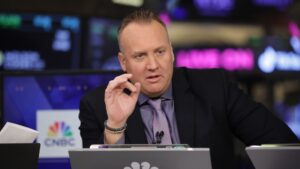Understanding the Bond Market Impact: A Perspective from Extreme Investor Network
In today’s shifting financial landscape, the recent sell-off in the bond market is causing ripples of concern among investors. However, as we at Extreme Investor Network analyze, this change could also pave the way for healthier equity markets by weeding out excessive speculation.
The Current State of the Bond Market
The rise in U.S. Treasury yields has reached notable heights, with the 30-year Treasury yielding over 5.14%—the highest since October 2023. This uptick has led to increased volatility and anxiety about the broader economic implications. Investors are wary that such shifts could derail the stock market rally, particularly following recent trade agreements that had initially spurred optimism.
Josh Brown’s Insight: A Balanced Approach
Renowned investor and CNBC Pro contributor, Josh Brown, provides a compelling perspective. He argues that while the spike in yields may indeed disrupt the most speculative segments of the stock market, the overall equities could withstand this shock. His analysis draws parallels to the challenges faced in 2022, when rising interest rates particularly affected SPACs, freshly minted IPOs, and highly leveraged tech startups.
Brown emphasizes that a higher cost of capital forces investors to reassess their strategies. "When capital has a cost, behavioral changes naturally ensue,” he notes, highlighting how the previous two years of low-interest rates fostered a risky investment environment.
The Future Landscape: Opportunities and Challenges
Looking ahead, Brown envisions a landscape where the stock market may continue its upward trajectory, buoyed by economic optimism. He suggests that even as rates rise, the economy’s fundamentals could support a positive narrative, especially with potential tax cuts on the horizon.
However, this does not absolve small-cap stocks and riskier assets from the repercussions of rising yields. These areas, historically more sensitive to interest rate hikes, may face significant headwinds.
Economic Indicators: Deciphering the Trends
A crucial aspect of Brown’s analysis involves observing the broader economic indicators. The tension between two competing narratives is palpable: on one side, concerns about persistent supply chain shocks; on the other, signs of a cooling labor market and a decelerating economy. Brown leans toward the latter, suggesting that the Federal Reserve may pivot towards rate cuts sooner than many anticipate.
Conclusion: Navigating the Investment Landscape
As we engage with these complex factors, it’s vital for investors to remain informed and adaptable. At Extreme Investor Network, we emphasize a thoughtful, strategic approach to investing, recognizing both risks and opportunities inherent in the current landscape.
We encourage our readers to take a proactive stance. Regularly reviewing economic data and adjusting portfolios accordingly can be key to navigating these turbulent waters successfully. Guidance from financial professionals can provide personalized insights tailored to your unique situation.
Investing is inherently risky, but with careful analysis and a willingness to adapt, you can position yourself for success, no matter how the markets fluctuate. For more expert insights and tailored advice, stay connected with us at Extreme Investor Network. Together, we can cultivate a more informed investing journey.

